#Battle of Arnhem
Explore tagged Tumblr posts
Text

Members of the British 1st Airborne in custody of 9th SS, Nijmegen/Arnhem. Sept 1944
#battle of arnhem#western front#liberation of holland#operation market garden#stug iii#tank destroyers#german armor
44 notes
·
View notes
Text
2 notes
·
View notes
Text
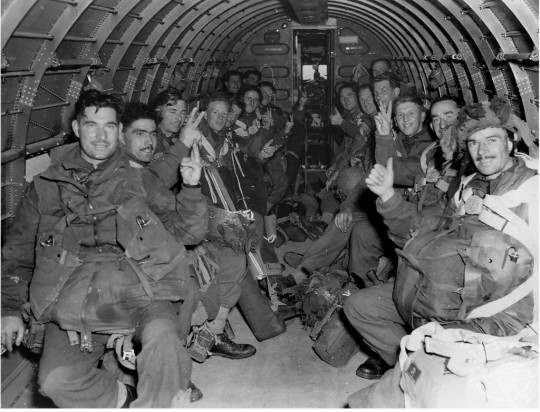
Parachutistes de la 1ère Division aéroportée britannique à l'intérieur de l'un des avions de transport C-47 pour la zone d'opération d'Arnhem - Opération Market Garden - Bataille d'Arnhem - 17 septembre 1944
©Imperial War Museums - K 7570
#WWII#bataille du benelux#opération Market Garden#operation Market Garden#bataille d'Arnhem#battle of Arnhem#opération aéroportée#airborne operation#armée britannique#british army#parachutistes#paratroopers#1ère Division aéroportée britannique#1st Airborne Division#Arnhem#pays-bas#netherlands#17/09/1944#09/1944#1944
22 notes
·
View notes
Text
Kate her Horst the 'Angel of Arnhem'.
During the ill-fated Operation Market Garden (17-26 September 1944) the British 1st Airborne Division suffered heavy casualties fighting in the Dutch city of Arnhem, the town of Oossterbeek, the villages of Wolfheze and Driel. Kate her Horst, described as a housewife and mother, turned her house into a makeshift hospital for the wounded and dying. She personally helped 250 wounded soldiers and…
0 notes
Text

A postcard design taken from the Classic Comics set released by Egmont in 2013. The image is by Ian Kennedy from the cover of Battle Picture Weekly and Valiant dated 23 July 1977. Treasury of British Comics.
13 notes
·
View notes
Text

• Stanisław Sosabowski
Stanisław Franciszek Sosabowski was a Polish general in World War II. He fought in the Polish Campaign of 1939 and at the Battle of Arnhem (Netherlands), as a part of Operation Market Garden, in 1944 as commander of the Polish 1st Independent Parachute Brigade.
Stanisław Sosabowski was born on May 8th, 1892 in Stanislau, in what was then Austria-Hungary and is now Ivano-Frankivsk in western Ukraine. His father was a railway worker. Sosabowski graduated from a local gymnasium and in 1910 he was accepted as a student of the faculty of economy of the Jagiellonian University in Kraków. However, the death of his father and the poor financial situation of his family forced him to abandon his studies and return to Stanislau. There he became a member of Drużyny Strzeleckie, a semi-clandestine Polish national paramilitary organisation. He was soon promoted to the head of all Polish Scouting groups in the area. In 1913, Sosabowski was drafted into the Austro-Hungarian Army. After training, he was promoted to the rank of corporal, serving in the 58th Infantry Regiment. After the outbreak of World War I he fought with his unit against the Imperial Russian Army in the battles of Rzeszów, Dukla Pass and Gorlice. For his bravery, he was awarded several medals and promoted to first lieutenant. In 1915, he was badly wounded in action and withdrawn from the front. In November 1918, after Poland regained its independence Sosabowski volunteered for the newly formed Polish Army, but his wounds were still not healed and he was rejected as a front-line officer. Instead, he became a staff officer in the Ministry of War Affairs in Warsaw.
After the Polish-Soviet War Sosabowski was promoted to major and in 1922 he started his studies at the Higher Military School in Warsaw. After he finished his studies he was assigned to the Polish General Staff. Promoted to lieutenant colonel, in 1928 he was finally assigned to a front-line unit, the 75th Infantry Regiment, as commanding officer of a battalion. The following year he was assigned to the 3rd Podhale Rifles Regiment as its deputy commander. From 1930 he was also a professor of logistics at his alma mater. In 1937 Sosabowski was promoted to colonel and became the commanding officer of the 9th Polish Legions Infantry Regiment stationed in Zamość. In January 1939 he became the commander of the prestigious Warsaw-based 21st Infantry Regiment. According to the Polish mobilisation scheme, Sosabowski's regiment was attached to the 8th Infantry Division. Shortly before the German invasion of Poland started his unit was moved from its garrison in the Warsaw Citadel to the area of Ciechanów, where it was planned as a strategic reserve of the Modlin Army. On September 2nd, the division was moved towards Mława and in the early morning of the following day it entered combat in the Battle of Mława. Although the 21st Regiment managed to capture Przasnysz and its secondary objectives, the rest of the division was surrounded by the Wehrmacht and destroyed. After that Sosabowski ordered his troops to retreat towards Warsaw. Sosabowski was ordered to man the Grochów and the Kamionek defensive area and defend Praga, the eastern borough of Warsaw, against the German 10th Infantry Division. During the Siege of Warsaw the forces of Sosabowski were outmanned and outgunned, but managed to hold all their objectives. When the general assault on Praga started on September 16th, the 21st Infantry Regiment managed to repel the attacks of German 23rd Infantry Regiment and then successfully counter-attacked and destroyed the enemy unit. After this success, Sosabowski was assigned to command all Polish troops fighting in the area of Grochów. Despite constant bombardment and German attacks repeated every day, Sosabowski managed to hold his objectives at relatively low cost in manpower. On September 26th, 1939, the forces led by Sosabowski bloodily repelled the last German attack, but two days later Warsaw capitulated.
Following the Polish surrender, Sosabowski was made a prisoner of war and interned at a camp near Żyrardów. However, he escaped and remained in Warsaw under a false name, where he joined the Polish resistance. He was ordered to leave Poland and reached France to report on the situation in occupied Poland. After arriving in Paris, The Polish government in exile assigned him to the Polish 4th Infantry Division as the commanding officer. Initially, the French authorities were very reluctant to hand over the badly needed equipment and armament for the Polish unit. Sosabowski's soldiers had to train with pre-World War I weapons. In April 1940, the division was moved to a training camp in Parthenay and was finally handed the weapons awaited since January, but it was already too late to organise the division. Out of more than 11,000 soldiers, only 3,150 were given arms. By June 1940, Sosabowski with approximately 6,000 Polish soldiers arrived at La Pallice, whence they were evacuated to Great Britain. Upon his arrival in London, Sosabowski turned up at the Polish General Staff and was assigned to 4th Rifles Brigade that was to become a core of the future 4th Infantry Division. The unit was to be composed mainly of Polish Canadians, but it soon became apparent that there were not enough young Poles in Canada from which to create a division. Then, Sosabowski decided to transform his brigade into a Parachute Brigade, the first such unit in the Polish Army. The volunteers came from all the formations of the Polish Army. In Largo House in Fife, a training camp was built and the parachute training was started. Sosabowski himself passed the training and, at 49 years of age, made his first parachute jump. In October 1942 the Brigade was ready for combat and was named the 1st Independent Parachute Brigade. Since the Polish General Staff planned to use the Brigade to assist a national uprising in Poland, the soldiers of the 1st Polish Para were to be the first element of the Polish Army in Exile to reach their homeland. Hence the unofficial motto of the unit: by the shortest road (najkrótszą drogą).
In September 1943, Lieutenant-General Frederick Browning proposed that Sosabowski reform his unit into a division and fill the remaining posts with British troops. Sosabowski himself would be assigned to the newly formed division and promoted to general. However, Sosabowski refused. Nevertheless, on June 15th, 1944 he was promoted to Brigadier General. In early August 1944, news of the Warsaw Uprising arrived in Great Britain. The Brigade was ready to be dropped by parachute into Warsaw to aid their comrades from the underground Polish Home Army, who were fighting a desperate battle against overwhelming odds. However, the distance was too great for the transport aircraft to make a round trip and access to Soviet airfields was denied. The morale of the Polish troops suffered badly and many of the units verged on mutiny. The British staff threatened its Polish counterpart with disarmament of the Brigade, but Sosabowski retained control of his unit. Finally, Polish Commander in Chief Kazimierz Sosnkowski put the Brigade under British command, and the plan to send it to Warsaw was abandoned.
During the planning for Operation Market Garden, Sosabowski expressed serious concerns regarding the feasibility of the mission. Among Sosabowski's concerns were the poorly conceived drop zones at Arnhem, the long distances between the landing zones and Arnhem Bridge and that the area would contain a greater German presence than British intelligence believed. Despite Sosabowski's concerns and warnings from the Dutch Resistance that two SS Panzer Divisions were in the operations area, Market Garden proceeded as planned. The Polish 1st Independent Parachute Brigade was among the Allied forces taking part in Market Garden. Due to a shortage of transport aircraft, the brigade was split into several parts before being dropped into the battle. A small part of the brigade with Sosabowski was parachuted near Driel on September 19th, but the rest of the brigade arrived only on September 21st at the distant town of Grave, falling directly on the waiting guns of the Germans camped in the area. The brigade's artillery was dropped with the British 1st Airborne Division. Three times Sosabowski attempted to cross the Rhine to come to the assistance of the surrounded 1st Airborne Division. Unfortunately, the ferry they hoped to use had been sunk and the Poles attempting to cross the river in small rubber boats came under heavy fire. Even so, at least 200 men made it across the river and reinforced the embattled British paratroopers. Despite the difficult situation, at a staff meeting on September 24th, Sosabowski suggested that the battle could still be won. He proposed that the combined forces of XXX Corps, under Lieutenant-General Brian Horrocks, and the Polish 1st Independent Parachute Brigade should start an all-out assault on the German positions and try to break through the Rhine. This plan was not accepted, and during the last phase of the battle, on 25th and 26th of September, Sosabowski led his men southwards, shielding the retreat of the remnants of the 1st Airborne Division. Casualties among the Polish units were high, approaching 40%. After the battle, on October 5th, 1944, Sosabowski received a letter from Field Marshal Bernard Montgomery, commander of the Anglo-Canadian 21st Army Group, describing the Polish soldiers as having fought bravely and offering awards to ten of his soldiers. However, on October 14th, 1944, Montgomery wrote another letter, this time to the British commanders, in which he scapegoated Sosabowski for the failure of Market Garden. Sosabowski was accused of criticizing Montgomery, and the Polish General Staff was forced to remove him as the commanding officer of his brigade on December 27th, 1944.
Sosabowski was eventually made the commander of rearguard troops and was demobilized in July 1948. Shortly after the war Sosabowski succeeded in evacuating his wife and only son from Poland. Like many other Polish wartime officers and soldiers who were unable to return to Communist Poland on pain of repercussions including death or disappearance, he settled in West London. He found a job as a factory worker at the CAV Electrics assembly plant in Acton.He died in London on September 25th, 1967. In 1969, Sosabowski's remains were returned to Poland, where he was reinterred at Powązki Military Cemetery in Warsaw. In The Hague, on May 31st, 2006, Queen Beatrix of the Netherlands awarded the Military Order of William to the Polish 1st Independent Parachute Brigade. The brigade's commander, Sosabowski, was posthumously awarded the "Bronze Lion". On June 1st, a ceremony was held at Driel, the town where the Polish 1st Independent Parachute Brigade fought. Among the speakers at the ceremony were the mayor of Overbetuwe, as well as Sosabowski's grandson and great-grandson. Sosabowski was portrayed by Gene Hackman in the 1977 war film A Bridge Too Far. In the summer of 2012 1st Airborne Major Tony Hibbert made a video appeal for Sosabowski to be pardoned and honoured.
#second world war#world war 2#world war ii#wwii#military history#airborne history#airborne#polish history#poland#a bridge too far#unsung heroes#market garden#polish airborne
64 notes
·
View notes
Text





Princess Anne and Sir Tim Laurence during a reception at the Airborne Museum Hartenstein in Oosterbeek, Netherlands, to commemorate the 80th anniversary of Battle of Arnhem, on 21 September 2024.
#THAT OLD MAN ROCKING HIS ADIDAS SUNNIES 😎#I'M SO HAPPY SHE WORE THIS DRESS AGAIN 😭 I'VE BEEN WAITING FOR HER TO DO IT SINCE 2022 😭#she looks lovely#princess anne#princess royal#tim laurence#timothy laurence#tim does stuff#always there to support his wife#brf#british royal family#workanne
87 notes
·
View notes
Text


Princess Anne places a wreath at the Cross of Remembrance during a ceremony to commemorate the 80th anniversary of the Battle of Arnhem at the Arnhem Oosterbeek War Cemetery in The Netherlands on 22 September 2024
67 notes
·
View notes
Text








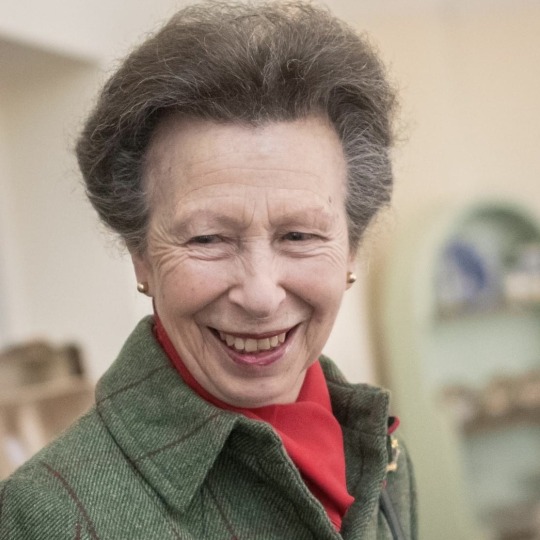
The Princess Royal’s Official Engagements in September 2024
01/09 unofficial With Sir Tim Attended a church service at Crathie Kirk. ⛪️🏴
10/09 As Colonel-in-Chief, visited The King's Royal Hussars at Aliwal Barracks in Tidworth, Wiltshire. 🪖
Sir Tim represented Princess Anne at a Service of Thanksgiving for Sir Clive Johnstone (National President of the Royal British Legion) which was held at St. Margaret's Church in Westminster, London. 🌹
11/09 Visited Estuary Services Limited and named a Pilot Vessel in Ramsgate Royal Harbour, followed by a Reception at Royal Temple Yacht Club. 🍾🚤
As Patron of the English Rural Housing Association, opened a new development at Carpenters Yard in Shepherdswell near Dover, Kent. 🌳🏠
12/09 As Patron of Citizens Advice Scotland, visited Penicuik Citizens Advice Bureau. ⚖️
As Patron of the International Sheep Dog Society, attended the International Sheep Dog Trials at Syde Farm in Lanarkshire. 🐑🐕
Unofficial Sir Tim attended the launch of the Bradford UK City of Culture 2025 🏙️
13/09 Attended the Southampton International Boat Show. 🚤
As Patron of the National Museum of the Royal Navy, visited the Fleet Air Arm Museum at Royal Naval Air Station Yeovilton in Ilchester, to mark its 60th anniversary. ✈️⚓️
As Patron of Save the Children UK, attended a Concert at Cheap Street Church in Sherborne, to mark 30 years of support from the Cambridge Choral Scholars. 🎶
16/09 As President of Victim Support, visited the Bristol Service at St Werburghs Community Centre, to mark its 50th anniversary. 🤝
As Patron of Gloucestershire Rugby Football Union, attended the Annual Volunteer Awards Reception at Lockleaze Sports Centre in Bristol. 🏉
17/09 As Colonel-in-Chief of The Royal Logistic Corps, visited the Joint Helicopter Support Squadron at A Hangar in Royal Air Force Benson. 🚁
As Patron of the National Transport Trust, attended the Annual Awards Ceremony at Fawley Hill Museum, in Henley-on-Thames. 🏆
As Royal Patron of the National Coastwatch Institution, attended a 30th anniversary reception at the Corporation of Trinity House. 🍾
18/09 As President of the UK Fashion and Textile Association, visited ApparelTASKER Sustainable Garment Manufacturer in London. 👕👖
20/09 As Patron of the Beef Shorthorn Cattle Society, attended a Members' Development Day at Podehole Farm in Thorney. 🐮
21/09 Unofficial With Sir Tim Departed from Kemble Airfield and arrived at Amsterdam Airport Schiphol. ✈️🇳🇱
With Sir Tim Attended a Reception at the Airborne Museum Hartenstein, to commemorate the 80th anniversary of the Battle of Arnhem. 🪂
22/09 With Sir Tim As President of the Commonwealth War Graves Commission, attended the Annual Service of Commemoration at Oosterbeek Airborne Cemetery. 🪦🌹
With Sir Tim Visited the house of “the Angel of Arnhem” in Oosterbeek. 🏠👼🏻
Unofficial With Sir Tim, departed from Amsterdam Airport Schiphol and arrived back at Kemble Airfield. ✈️🇬🇧
24/09 As President of the Scotch Chef’s Club, visited Hugh Black and Sons Limited in Stirling. 🥩🏴
As Patron of the Royal Highland Education Trust, attended a Food and Farming Day at Solsgirth Home Farm in Dollar. 🎓🚜
As Patron of Opportunity International United Kingdom, held a Dinner at St James’s Palace. 🌍 🍽️
25/09 On behalf of The King, held an Investiture at Windsor Castle in the morning and afternoon.
26/09 As President of the Commonwealth War Graves Commission, inaugurated the Loos British Cemetery extension and attended a Reburial Service of Unknown Soldiers. 🇬🇧🇫🇷🪦
Attended a Reception at the Town Hall, Place de la République in Loos-en-Gohelle, France. 🇫🇷🥂
As Patron of Sense International, attended a Dinner at Church House, Westminster, to mark the 30th anniversary of the charity. 🦯🦻🎂
27/09 Opened Hull Trinity House Academy in Hull, East Yorkshire. 🏫
As Patron of the Sailors’ Children’s Society, presented awards at the “Anchor of Celebration” ceremony at Hull Trinity House. 🏆⚓️
As Patron of the Spinal Injuries Association, attended a 50th anniversary reception at SIA House in Milton Keynes. 🦽🎂
30/09 With Sir Tim As Patron of the Minchinhampton Centre for the Elderly, visited Horsfall House, to mark its 30th Anniversary. 🏡🎂
As Colonel-in-Chief of The Royal Logistic Corps, visited the Gurkha Allied Rapid Reaction Corps Support Battalion to mark the redesignation of 170 Headquarters Squadron at Imjin Barracks. 🪖
Total official engagements for Anne in September: 33
2024 total so far: 313
Total official engagements accompanied/represented by Tim in September: 5
2024 total so far: 86
FYl - due to certain royal family members being off ill/in recovery I won't be posting everyone's engagement counts out of respect, I am continuing to count them and release the totals at the end of the year.
#princess anne#princess royal#tim laurence#timothy laurence#september 2024#unofficial engagement count 2024
35 notes
·
View notes
Text

C-47s dropping British paratroopers of 1st Airborne Brigade on to Dropping Zone 'X', at Renkum, west of Arnhem, The Netherlands. 17 September 1944
#wwii#aviation#western front#operation market garden#battle of arnhem#september#liberation of holland
32 notes
·
View notes
Text



In a quiet cemetery in Arnhem, a British soldier has finally received the burial he deserves.
The remains of Private Henry Moon had been lost for almost 80 years, following his death during the Battle of Arnhem.
He was part of a huge Allied effort to open up a new route in Nazi Germany and hasten the end of the Second World War. Allied forces met with heavy opposition however, and the losses were heavy.
Relatives of Private Moon travelled to the Netherlands to attend the burial service, arranged by the MOD’s Joint Casualty and Compassionate Centre.
41 notes
·
View notes
Text
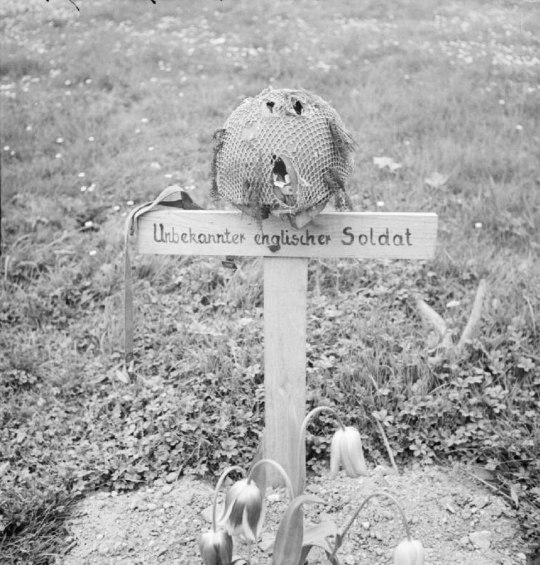
Tombe d'un parachutiste anglais tué pendant la bataille d'Arnhem en septembre 1944 photographiée par les forces de libération le 15 avril 1945 - Opération Market Garden - Bataille d'Arnhem - Arnhem - Pays-Bas
Photographe : Sergent C. H. Hewitt - No. 5 Army Film and Photo Section, Army Film and Photographic Unit
©Imperial War Museums - BU 3646
#WWII#bataille du benelux#libération des Pays-Bas#opération Market Garden#operation Market Garden#bataille d'Arnhem#battle of Arnhem#victimes militaires#killed in action#tombe#grave#Arnhem#pays-bas#netherlands#15/04/1945#04/1945#1945
12 notes
·
View notes
Text
The Red Devils during the Battle of Arnhem (Pathé News)
View On WordPress
0 notes
Text
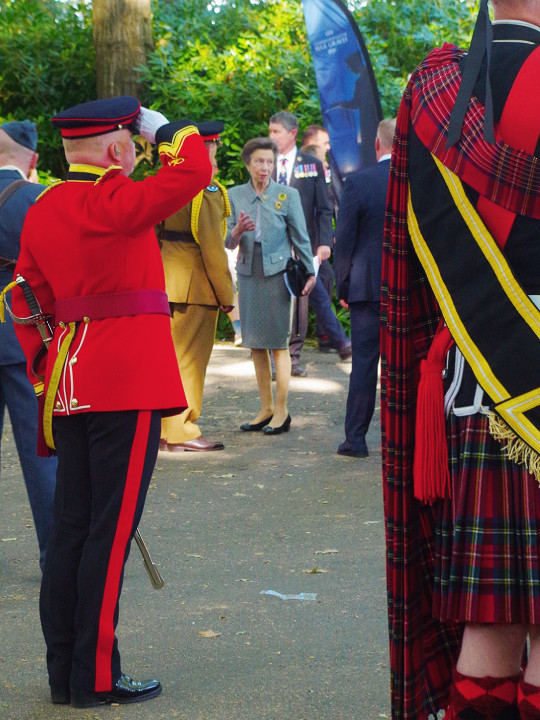
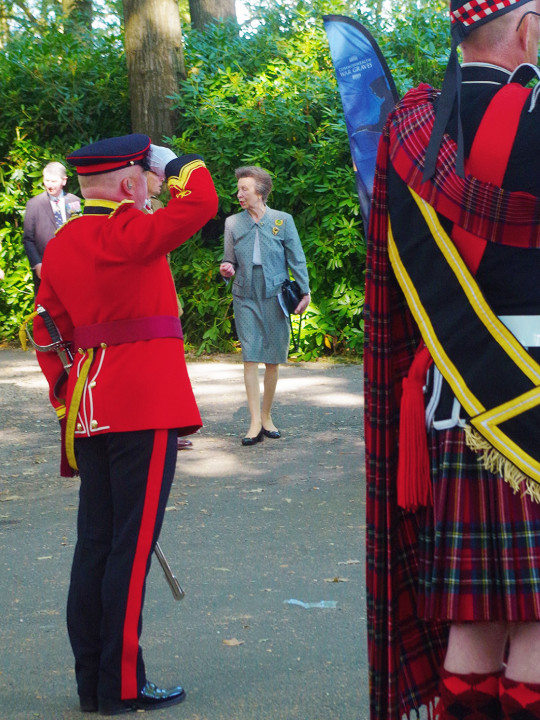
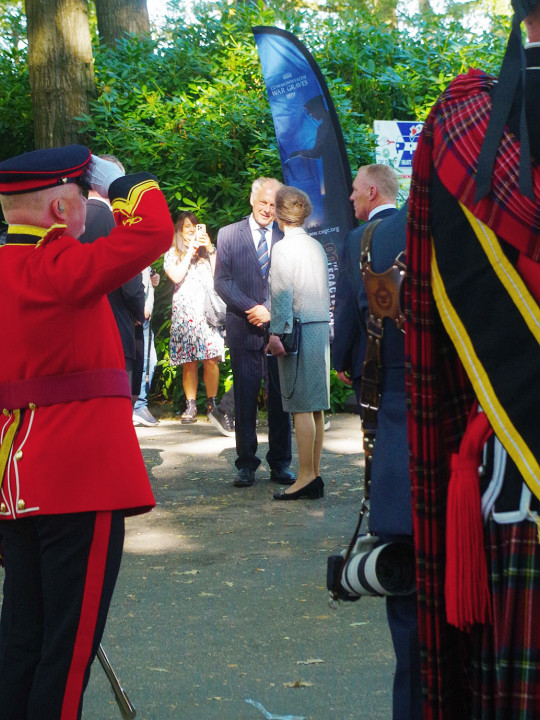


22 SEPTEMBER 2024 || Princess Anne and Sir Tim Laurence photographed during a ceremony to commemorate the 80th anniversary of the Battle of Arnhem at the Arnhem Oosterbeek War Cemetery in The Netherlands.
These photographs were captured by @fundiesimsfamily , who along with her family, attends the commemorations annually to honour her grandfather who saw action during the Battle of Arnhem at just 18 years of age.

The wreath laid down by the Princess Royal at the Cross of Remembrance during the ceremony. The wreath was signed with the message, 'We will remember them'
#princess anne#the princess royal#princess royal#sir tim laurence#timothy laurence#british royal family#british royals#royalty#brf#royals#royal#british royalty#royaltyedit#royalty edit#anne#22.09.2024
25 notes
·
View notes
Text
Princess Anne to represent King at events to mark 80th anniversary of Battle of Arnhem
#Netherlands upcoming trip#Tim's also attending#GOAT COUPLE PRINCESS ROYAL AND VICE ADMIRAL SIR TIMOTHY LAURENCE#Busy Bee 🐝 Princess Royal and Vice Admiral Sir Timothy Laurence#Mr & Mrs Timothy Laurence#Princess Royal#Princess Anne#Tim Laurence#Timothy Laurence#British Royal family
22 notes
·
View notes
Text
Sylvester Stadler
He was a high-ranking Austrian commander of the Waffen-SS, a commander of the SS Division Hohenstaufen, previously having been the commander of the SS regiment whose 3rd Company was responsible for the Oradour-sur-Glane massacre. Only 34 years old at the end of the war, he held the rank of SS-Brigadeführer and generalmajor of the Waffen SS and was a recipient of the Knight's Cross with Oak Leaves.
Stadler was born in Austria, the son of a Styrian miner, who learned the profession of electrical engineer after elementary and state school in Judenburg but joined the Nazi party and the SS in May 1933.
At the beginning of the Second World War, he led a company of the SS-Verfügungstruppe. He then fought with the SS-Verfügungsdivision in France in 1940, where he was wounded near Arras. He also took part in the Balkan campaign in 1941. After being wounded again in the Battle of Moscow in 1941, he was briefly employed as a tactics teacher at the SS-Junker School in Braunschweig .
From March 1, 1942 he commanded the 2nd Battalion of the Panzer Grenadier Regiment Der Führer belonging to the SS Division Das Reich. In May 1943 he was appointed commander of the entire Der Führer regiment with which he fought in Russia. For repelling an intrusion by the Red Army near Kharkov, he was awarded the Knight's Cross of the Iron Cross on April 6 1943.
To recuperate, the Der Führer regiment, which had been severely decimated in Russia, was relocated to France in the Toulouse area at the beginning of 1944 - just like the remaining 2nd SS Panzer Division “Das Reich”. The division was ordered north to combat the Allied landing forces in Normandy in June 1944.
While Stadler was commander of the Der Führer, a subordinate unit under his command committed the Oradour-sur-Glane massacre. On 10 June 1944, part of the regiment, led by SS-Sturmbannführer Adolf Diekmann, killed 642 inhabitants of Oradour-sur-Glane. Stadler ordered a court martial for Diekmann, albeit the latter was killed in action before he could face the ordered trial.
On 10 July 1944, Stadler was appointed commander of the SS Division Hohenstaufen; it fought on the Eastern Front, in Normandy, at the Falaise pocket, at Arnhem ("Operation Market Garden"), in the Ardennes offensive and in Hungary. He surrendered his division to the U.S. Army in Austria in May 1945. Stadler was interned until 1948.

8 notes
·
View notes